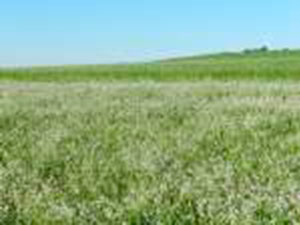Descrição
Known as: Forage Turnip
Scientific name: Raphanus sativus L.
Family: Crucifer
Kg per hectare: 30 kg per hectare.
Origin: Originating in Southern Europe
Utilities: It is widely used in green manure, as its roots decompress the soil, allowing for its biological preparation in crop rotation and animal feed.
Growth: Herbaceous and Crawling
Vegetative Cycle: Annual (60 to 90 days until flowering)
Characteristics: Very vigorous plant, the forage turnip is a winter crucifer, herbaceous, erect, very branched and endowed with rough. It is a drought and frost tolerant species, being a cropping option for autumn and winter. Furthermore, it grows reasonably in weak soils with acidity problems and is quite resistant to diseases and pests, not requiring much soil preparation for its cultivation.
Occurrence: the cultivation occurs mainly in regions with a cold and humid climate such as the South, Southeast and Center-West, but it can also be cultivated in a tropical climate.
Morphology: The root is pivoting, reaching 2 meters in depth. The leaves alternate between 12 cm and 15 cm in length, with a long terminal. The plants reach a height of 1 meter and 1.8 meters. The flowers occur at the ends of the stem and are white in color, sometimes purple or white with purple or lavender hues. The small, rounded brown beans are protected by elongated pods.
Phenology: Flowering occurs 80 days after planting and flowering lasts for more than 30 days. At 120 days, it reaches maturity and the plant height varies from 1 m to 1.80 m.

